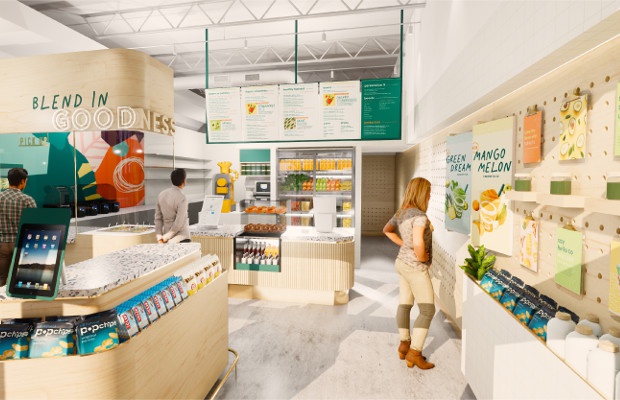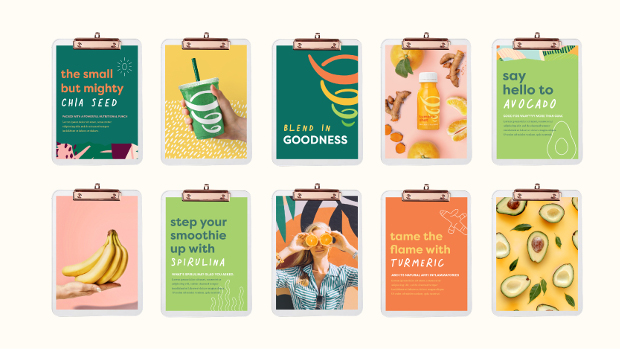 I love smoothies and thank Jamba Juice for making them mainstream. They put those sweet, delicious, frozen concoctions on my radar. I also love California Pizza Kitchen, particularly their tortilla soup and the Thai Crunch salad.
I love smoothies and thank Jamba Juice for making them mainstream. They put those sweet, delicious, frozen concoctions on my radar. I also love California Pizza Kitchen, particularly their tortilla soup and the Thai Crunch salad.
One day after reading an article about the dangers of too much sodium in my diet, without even thinking about it, I went to CPK’s website to check out the nutrition facts. My CPK visits dropped precipitously as a result, from somewhere around 25 a year to three or four at most.
My go-to CPK lunch, a cup of the aforementioned soup along with a small (one-half) Thai Crunch salad contain a whopping 1,560mg of sodium. As the American Heart Association recommends no more than 2,300 milligrams a day, with an “ideal” limit of no more than 1,500 mg per day for most adults, that’s not good. It was all a lot more caloric than I thought as well.
Of course, taking in excessive amounts of sodium and calories is a hazard of eating in any restaurant, whether it’s fast-food or fine dining. Restaurants know that salt makes food taste better and they add it with unabandoned glee.
For some reason it wasn’t quite the same with Jamba Juice. They’ve always been transparent about nutrition, with printed materials in the units as well as posting the information online. I’ve always know there were lots of calories and sugar. Buy hey…it’s fruit. It’s still healthy, right? I never really worried about it until the satanic qualities of sugar started to be so well promoted in the news.
Jamba Juice officially became “Jamba” recently to demonstrate, according to a company press release, a “renewed commitment to more balanced ingredients that will include expanded plant-based options and reduced sugar selections among other innovations.”
That translates to a broader menu, including oatmeal, breakfast sandwiches, flatbreads and baked goods.
Stores are getting a facelift as well, also aimed at giving Jamba a less sugary feel. According to Adweek,
“…the brand logo and the interior design of the restaurants are more muted than before. “It was about creating a neutral backdrop to highlight the goodness of the food,” said Jennifer Jones, managing partner of the Sterling-Rice Group, which oversaw the refresh. Also toned down was the color palette of the “whirl” (that’s the springy thing in the logo). “It looked very sugary,” Jones said, suggesting “cotton-candy flavors.” And with 67% of Americans now saying they’re cutting down on sugar, candy is not what you want to suggest on a menu.
Still, until the next food villain emerges, sugar is Public Enemy #1. According to the American Heart Association, the maximum amount of added sugar you should eat in a day are 37.5 grams for men and 25 grams for women.
Jamba, less sugary in appearance, still has a serious sugar problem. Smoothies, their flagship, are loaded with more sugar than a Warm Brownie Sundae from Baskin-Robbins. A medium (22 oz.) serving of the popular Mango-a-Go-Go smoothie packs 87 grams of sugar versus the sundae’s 74. Even the new “plant-based” Amazing Greens smoothie has 58 grams of sugar.
It doesn’t get much better when it comes to the new “healthier” bowls. An Acai Primo bowl is packed with 65 grams of sugar.
Will the rebrand future-proof Jamba, at least for the next few years? The work is all strategically sound and very well executed. The sugar issue aside, Jamba was always challenged to broaden its offerings beyond smoothies to increase its reach, frequency of visits and check size.
The question is, while they’ve evolved in style, has the substance of the offering changed enough? Jamba sure is doing everything it can to appear to be healthy. Will consumers buy it? Or do they even care?

An ice cream sundae may have fewer grams of sugar than a Jamba Smoothie, but they are light years apart in perception.
Jamba = Fruit and Juice (and now granola, oatmeal and more) = Healthy
Ice Cream Sundae = Decadence
Do the facts ever matter?



